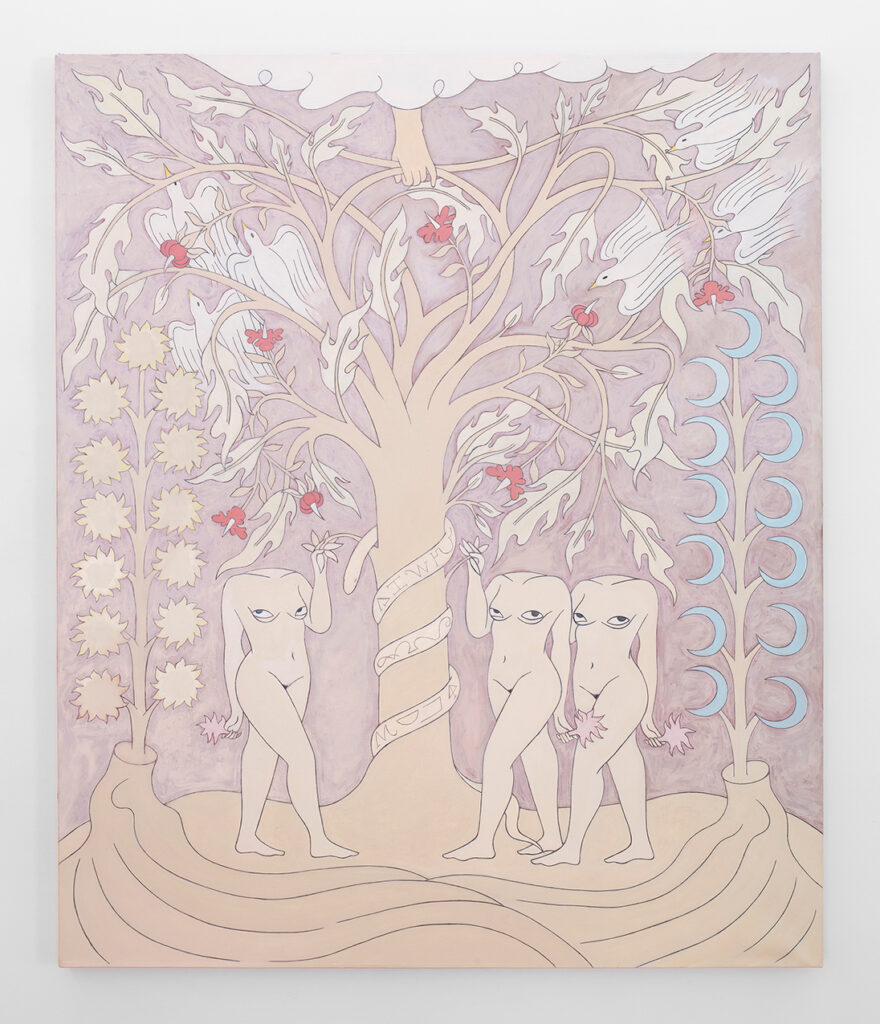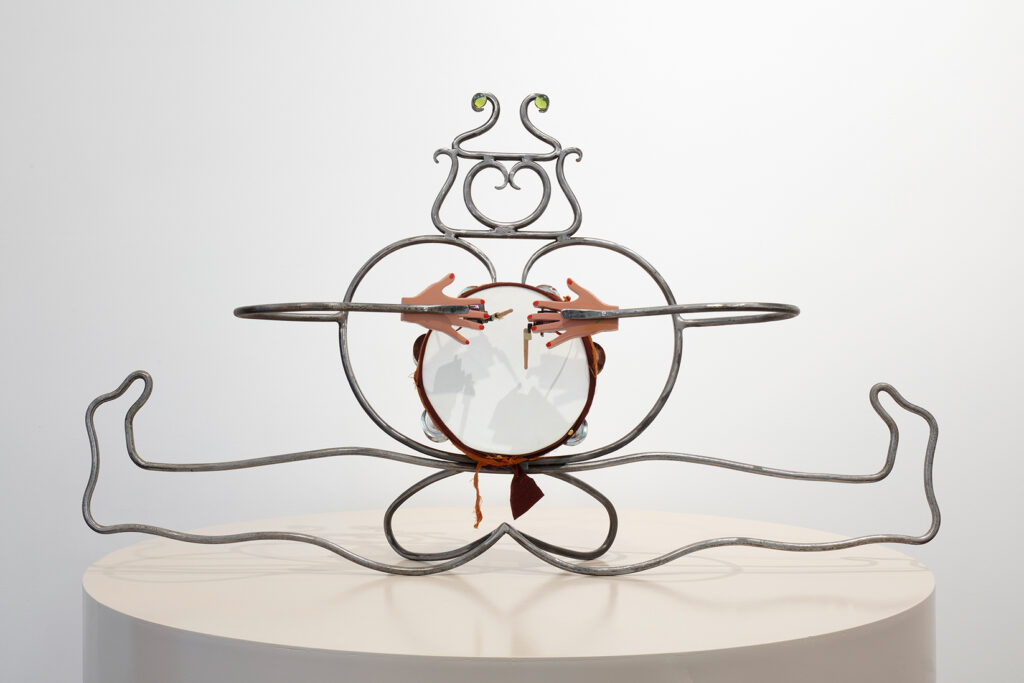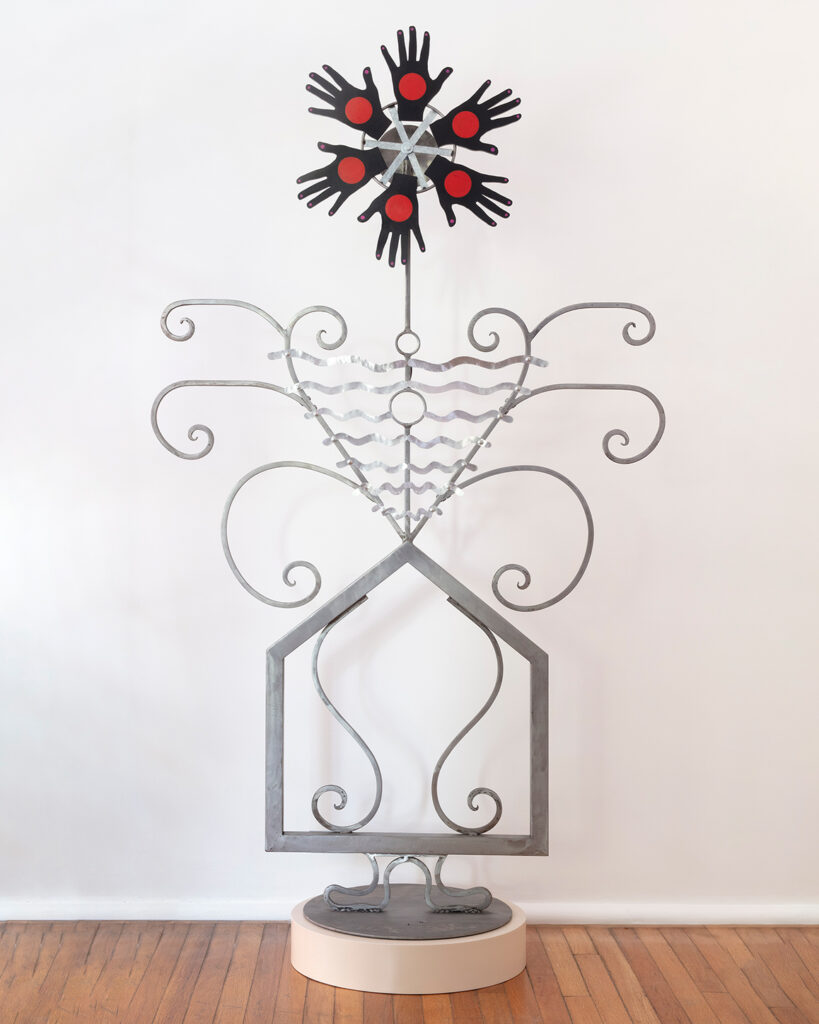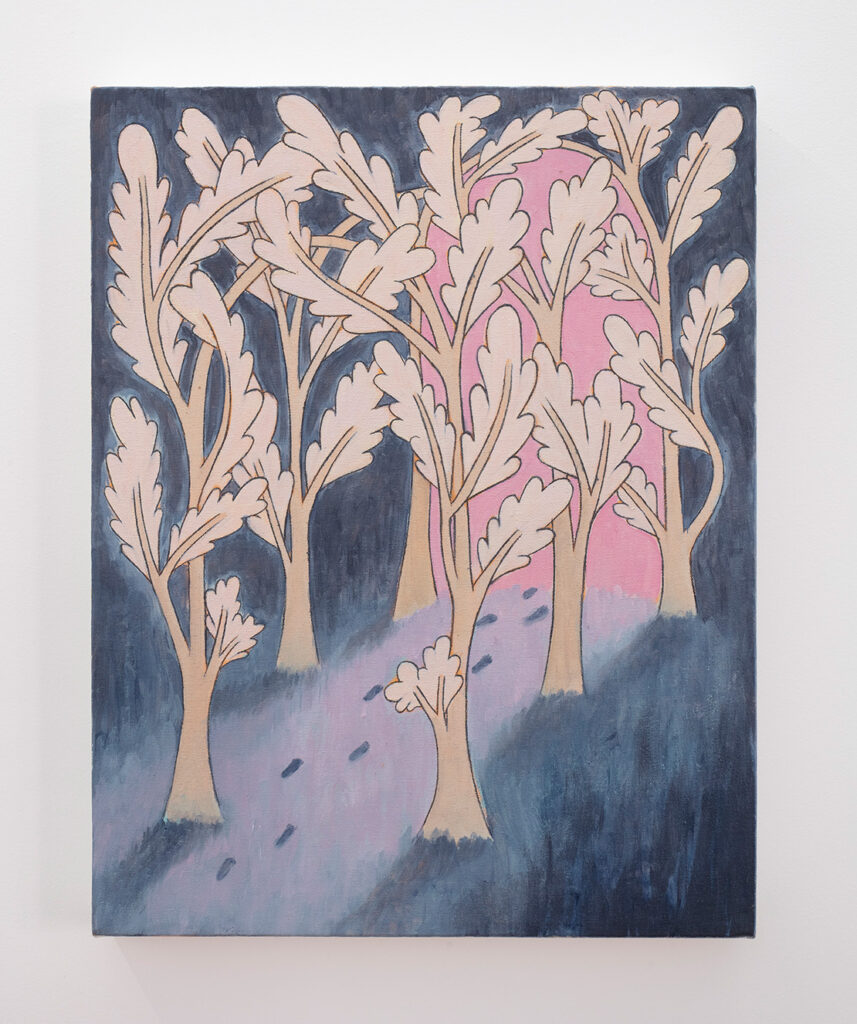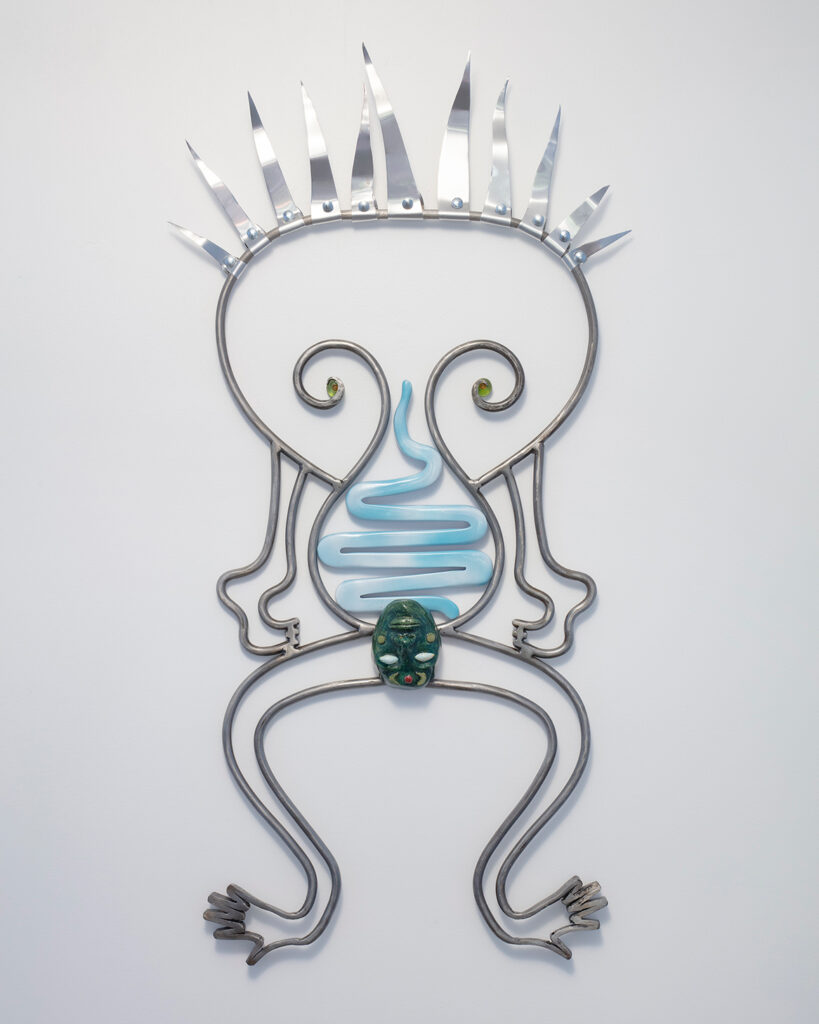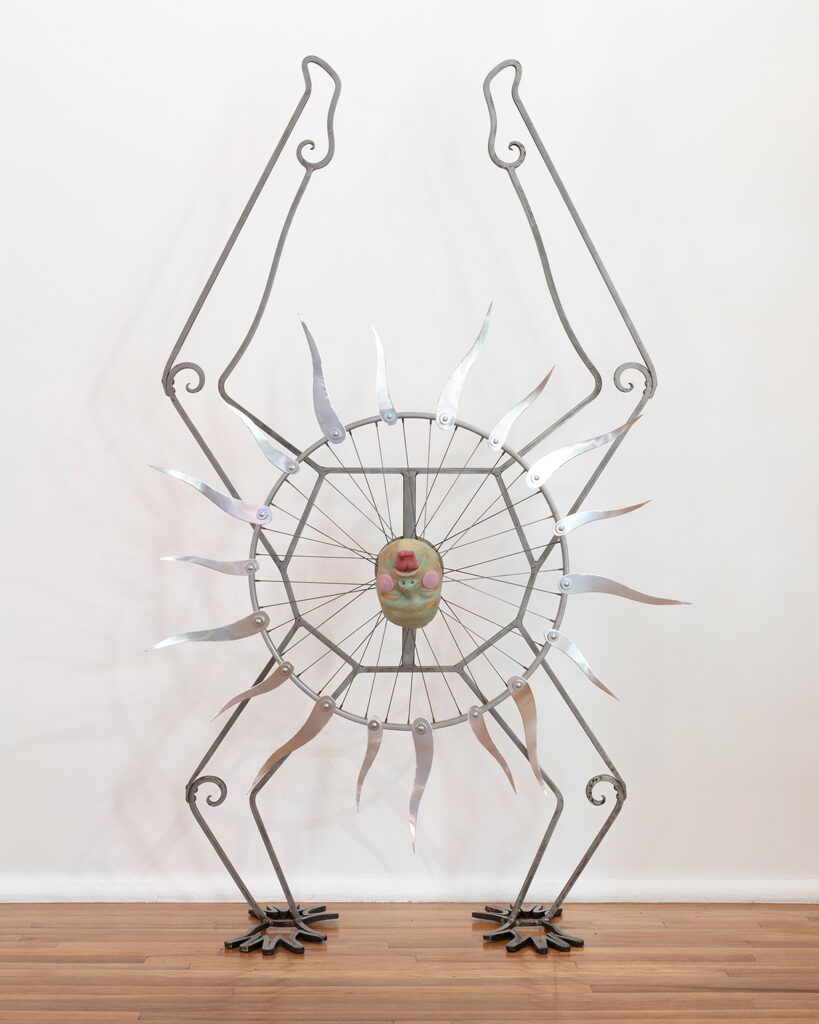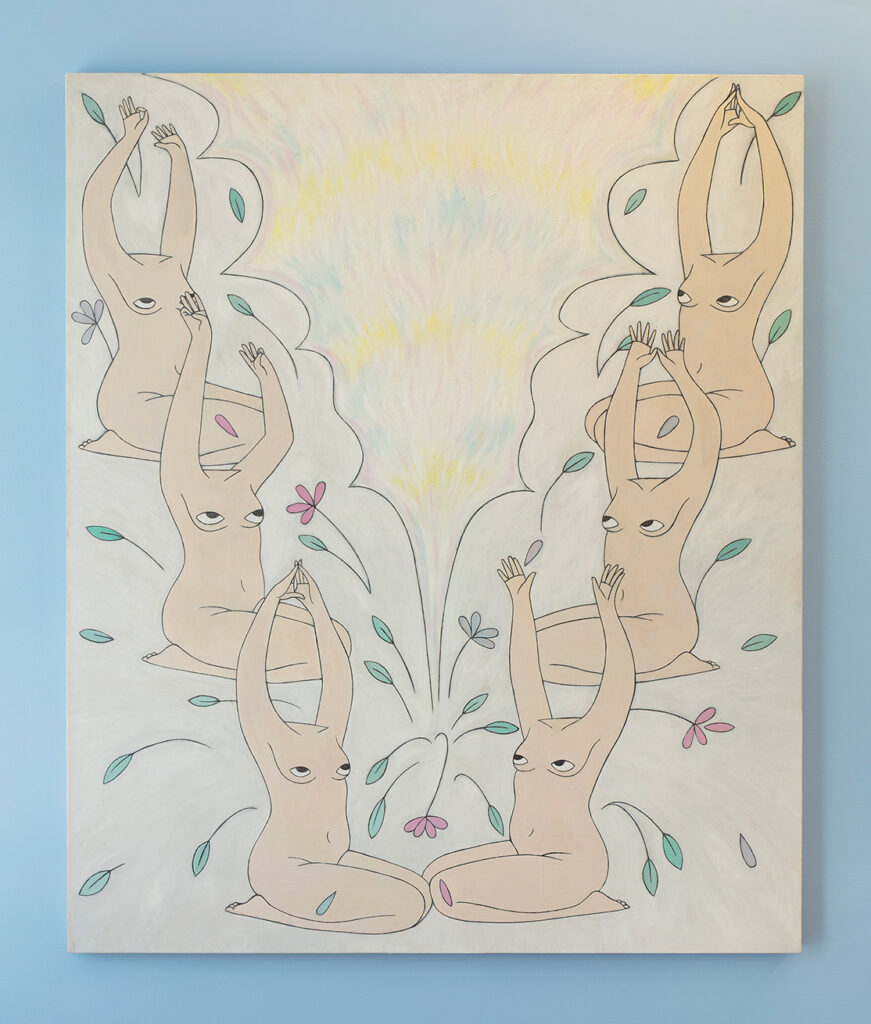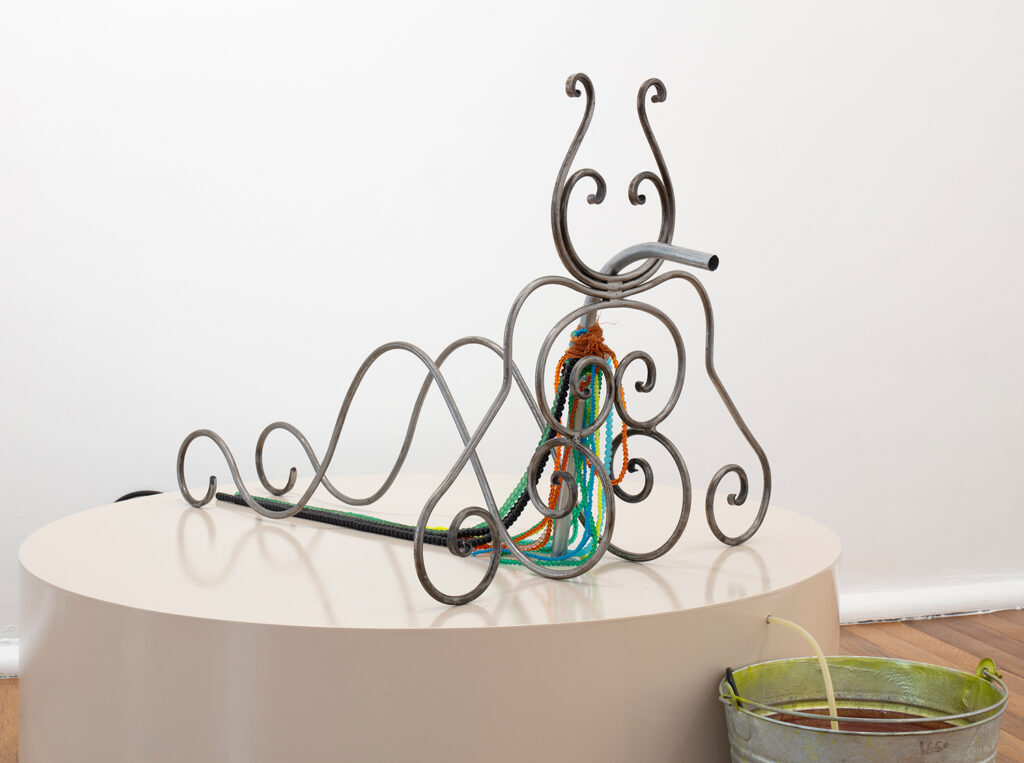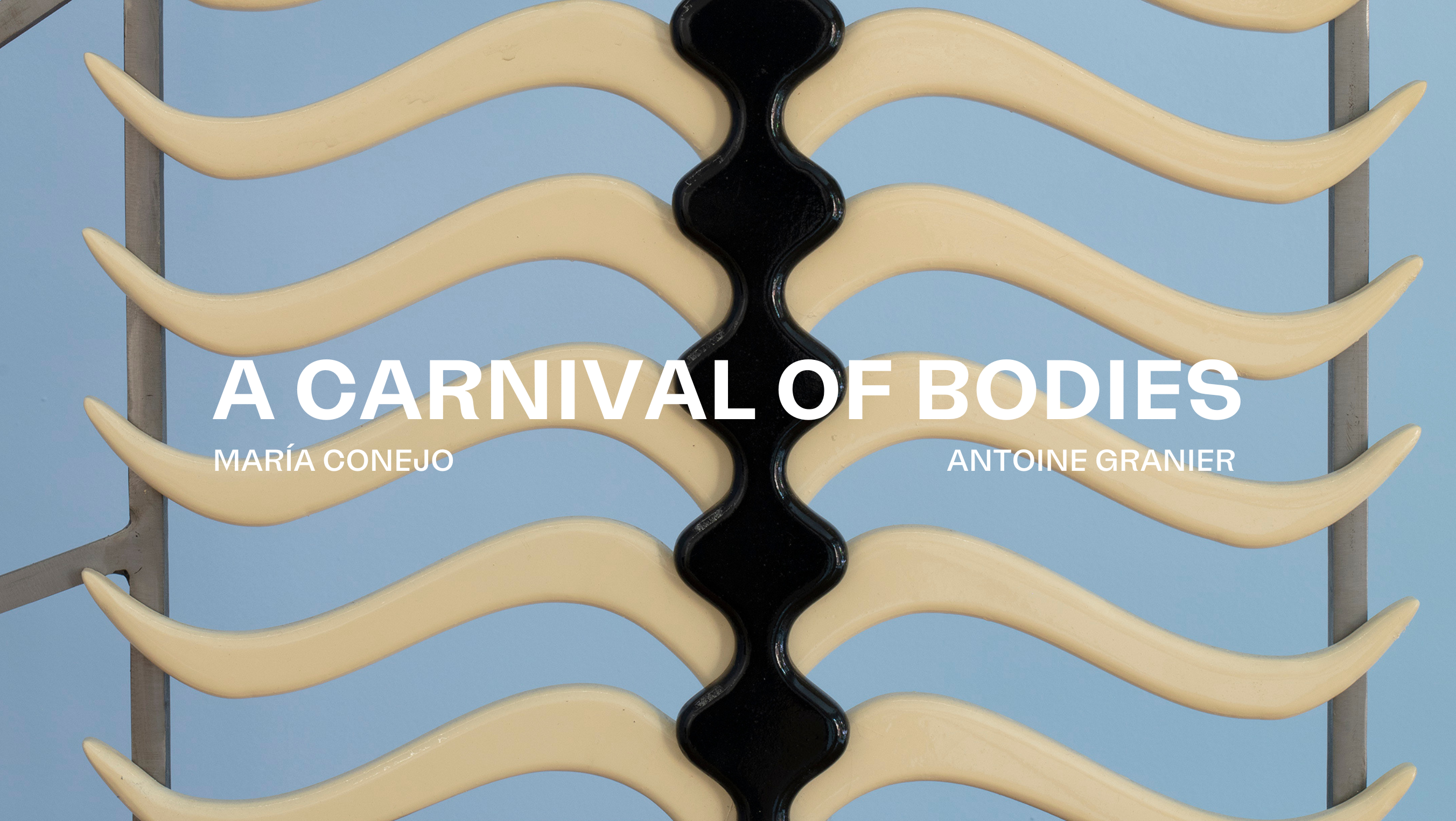
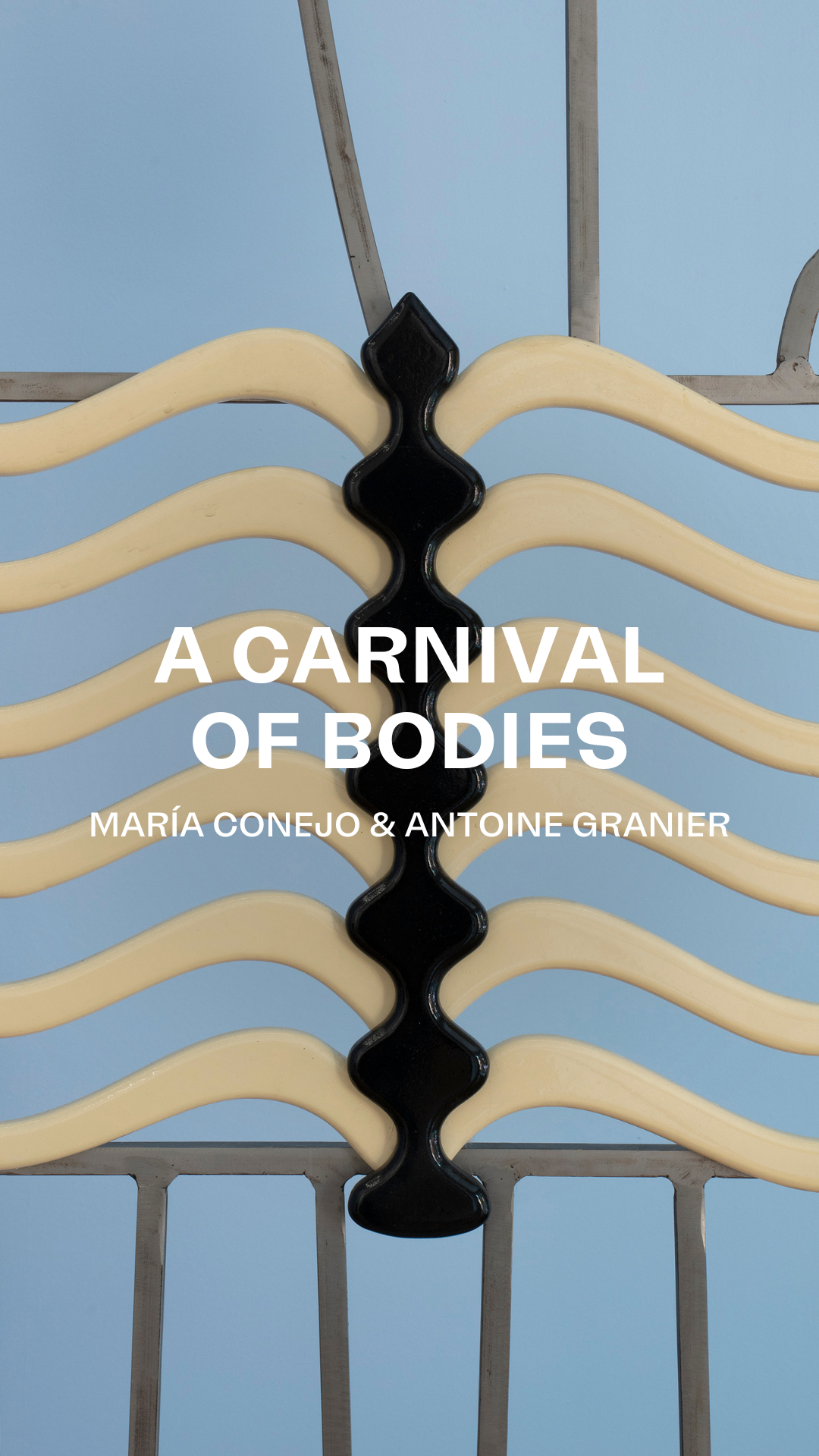
A Carnival of Bodies brings together María Conejo and Antoine Granier, crafting a corporeal convergence through a shared exploration of the body as a site of enunciation –a vessel through which histories, technologies, and desires speak. Engaging with Bakhtin’s concept of the carnivalesque, that centers on the inversion of social hierarchies and advocates for liberation through the celebration of bodily excess, Conejo and Granier blur the boundaries between the work and the viewer, the serious and the absurd, authority and play by inviting us to participate in a metaphoric carnival that allows multiple voices to coexist within the gallery.
Employing the body to create meaning and as a locus for resistance, they both explore identity and self-determination through narrative, theatricality, devotion, and celebration. Conejo’s headless feminine figures reclaim corporeal space from patriarchal erasure, embodying memory, vulnerability, and resistance. While Granier’s hybrid sculptures animate speculative bodies that expose the frictions between flesh and circuit, nature and artifice. Together, their works foreground the body not as passive form, but as a dynamic interface: tactile, symbolic, and defiantly expressive in the face of systemic control. Rather than fixed or decorative, their figures function as metaphoric entities that explore the multiple fluid dimensions of having a body and inhabiting it in the world today.
Focused on exploring the feminine body and its relationship to nature, be it through pleasure, resistance or narrative, María Conejo’s works provide a space for the emergence of a power deeply steeped in a feminist reimagining of representation. A profound exploration of sensations, desires, and lived histories, she centers her work on the body not just as form, but as a site for signification. Her deeply personal and yet universal pieces represent headless or fragmented female bodies intertwined with the landscape –her figures adopting adoring poses in response to the makeshift portals that appear and seemingly communing with their surroundings, capturing the emotional and somatic rhythms of belief. Expressing internal or emotional states through posture, gesture and movement, Conejo invites viewers into tender yet forceful reflections on self‑rediscovery, desire, intuition and ancestral female power. Drawing on anatomical iconography, alchemical symbolism, and ancient medical texts; and greatly inspired by Simone Weil’s ‘Gravity and Grace’, Conejo’s paintings become sanctuaries of emotion, spirituality, and eroticism. Resonant and disarming, they reveal the sacredness and complexity of the body and its relationship to its environment, thus affirming women and queer bodies as protagonists of their own narratives whilst embodying the mutable nature of identity.
Similarly, Antoine Granier’s abstracted figures made into kinetic machinery evoke the othered body, the grotesque, and the queer through references to Georges Méliès, turn-of-the-century fairgrounds, and fortune‑telling booths. He fuses DIY mechanics, proto-cinematic illusion, and poetic performativity to conjure up a whimsical collision of the organic and technologic. Moving and transforming in real time, his mesmerising mechanical hybrids critique technological capitalism and explore the ways in which we reshape the land, bodies, and belief systems in a hyper‑digitized world. Parsing out our fraught relationship with technology, nature, and social control, his sculptures blur the boundary between magic and machine through a performativity that engages the viewer and exposes how bodies and identities are shaped, masked, and monitored. A quirky critique full of wonder, Granier’s uncannily charming pieces mobilize collective joy and storytelling in an effort to reclaim communal spaces through a rich dramaturgy of resistance and re-enchantment. Championing metamorphosis as a gesture of resistance, his techno‑musical mutations playfully challenge the machinizing strategies of capitalism –those systems that rationalize bodies, reduce intuition to algorithms, and treat flesh as mere production units.
Though approaching artistic production from two different mediums, both Conejo and Granier interrogate how bodies, narratives, technologies and spirituality shape identity and our sense of agency or power in the world. Evoking ritual, invocation, performability and celebration, they disrupt linear notions of time and progress, opting instead for cyclical, fragmented, and emotionally charged forms of storytelling that mirror the complexities of embodied experience. Creating affect, questioning memory, and serving as cultural critique, their works allow for multiple readings that oscillate between the personal and the political. Constructing alternative mythologies, Conejo and Granier meet at the crossroads between poetic resistance and symbolic embodiment, and push back at dominant social and technological structures that attempt to control us while also proposing the possibility of imagining alternate realities from within a fractured world. Thus turning celebration, radical tenderness, speculative invention, and overall carnavalesque essence into tools for survival and liberation.
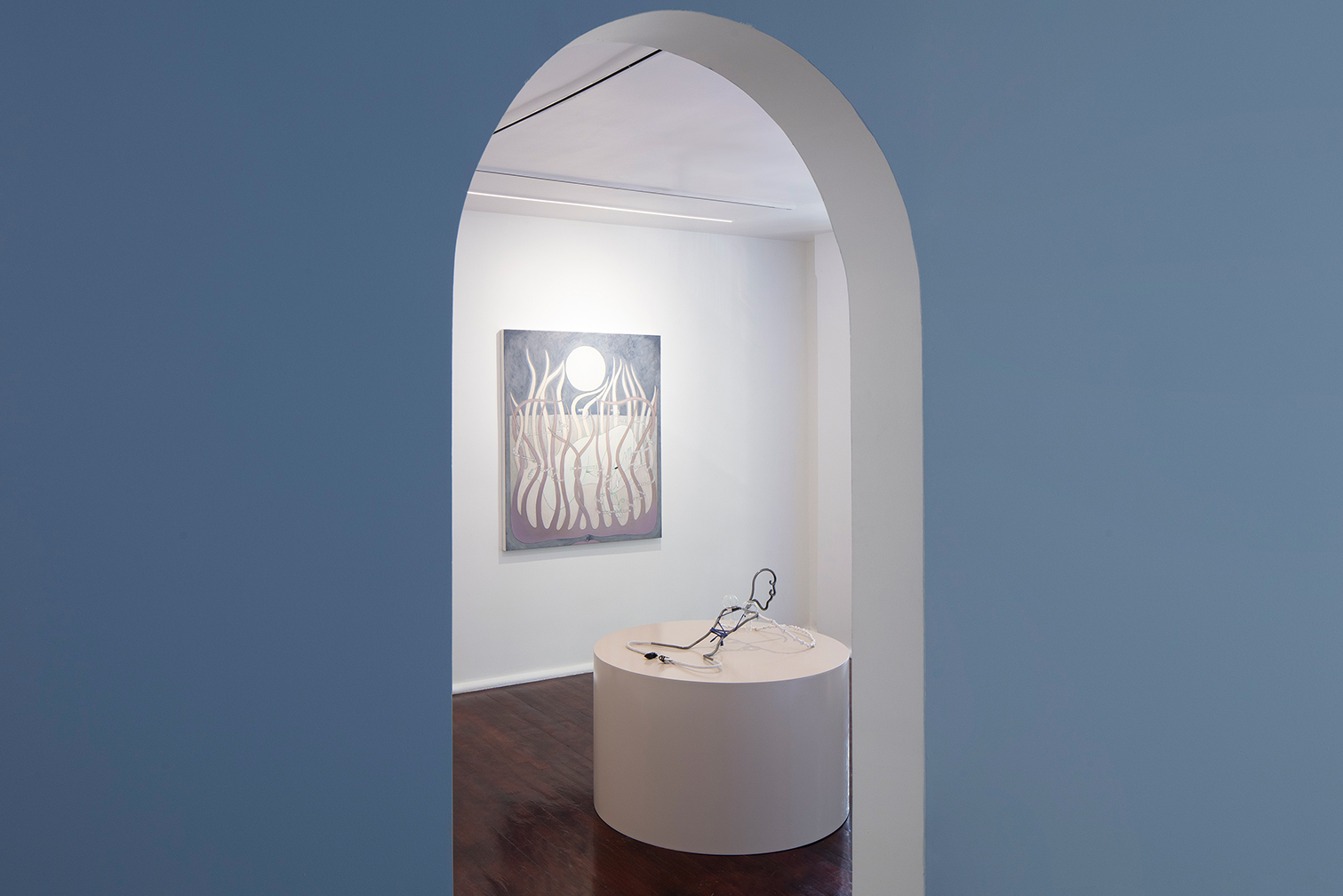
Employing the body to create meaning and as a locus for resistance, they both explore identity and self-determination through narrative, theatricality, devotion, and celebration. Conejo’s headless feminine figures reclaim corporeal space from patriarchal erasure, embodying memory, vulnerability, and resistance. While Granier’s hybrid sculptures animate speculative bodies that expose the frictions between flesh and circuit, nature and artifice.

Together, their works foreground the body not as passive form, but as a dynamic interface: tactile, symbolic, and defiantly expressive in the face of systemic control. Rather than fixed or decorative, their figures function as metaphoric entities that explore the multiple fluid dimensions of having a body and inhabiting it in the world today.
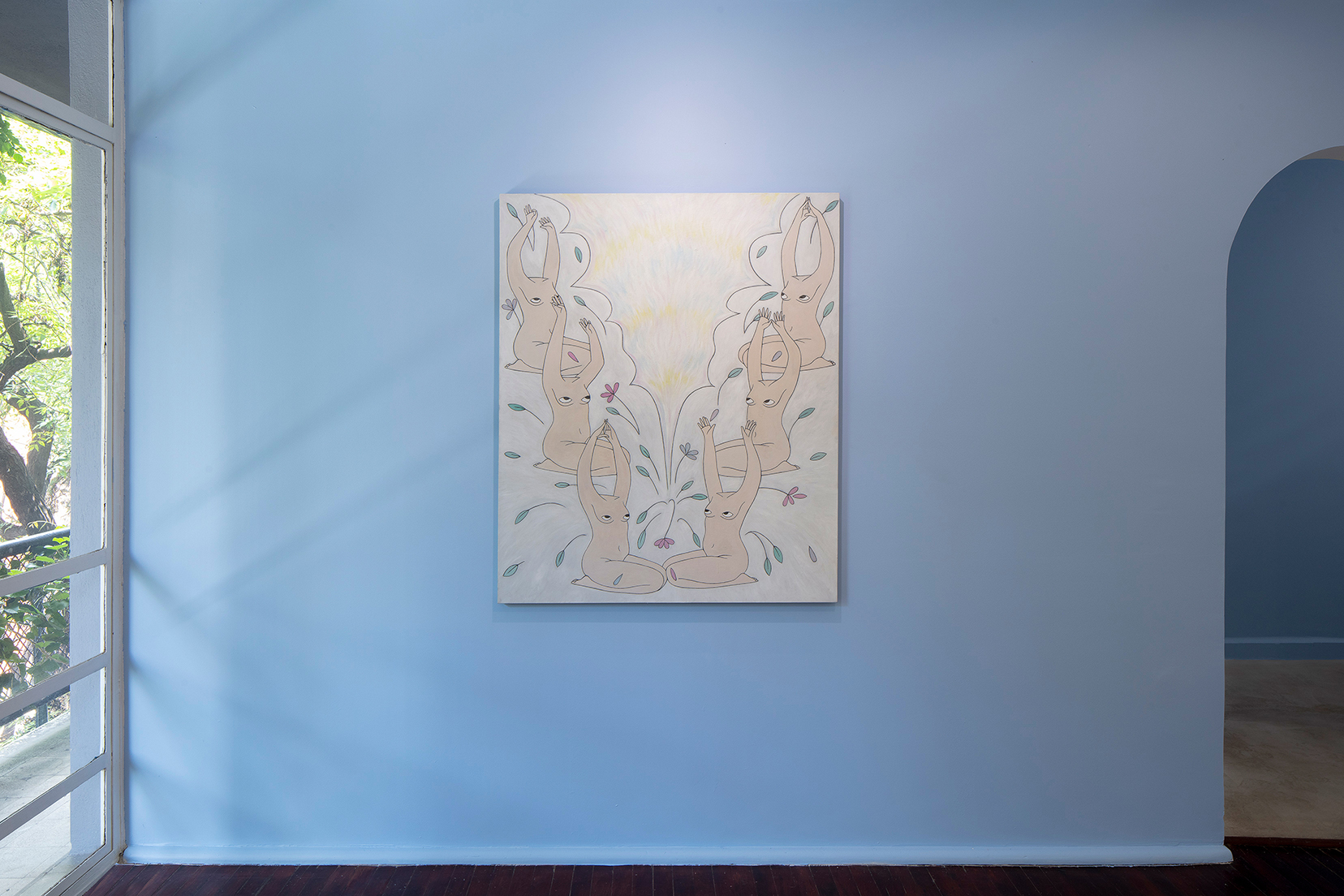
Though approaching artistic production from two different mediums, both Conejo and Granier interrogate how bodies, narratives, technologies and spirituality shape identity and our sense of agency or power in the world.
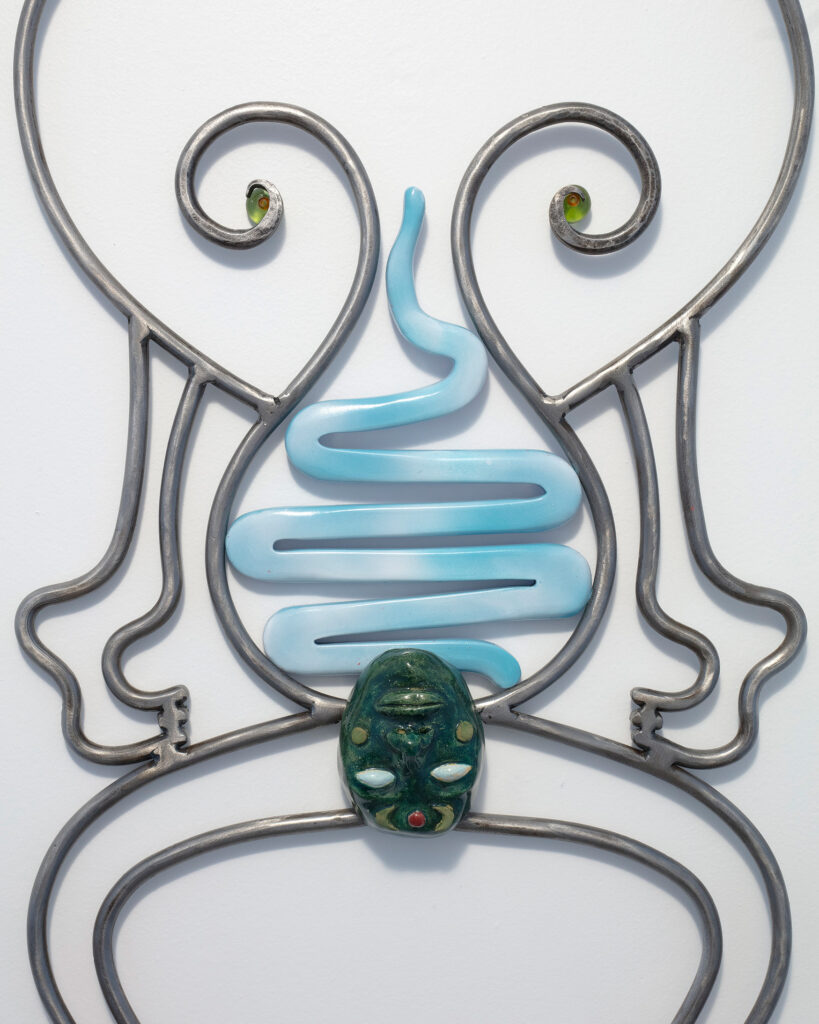
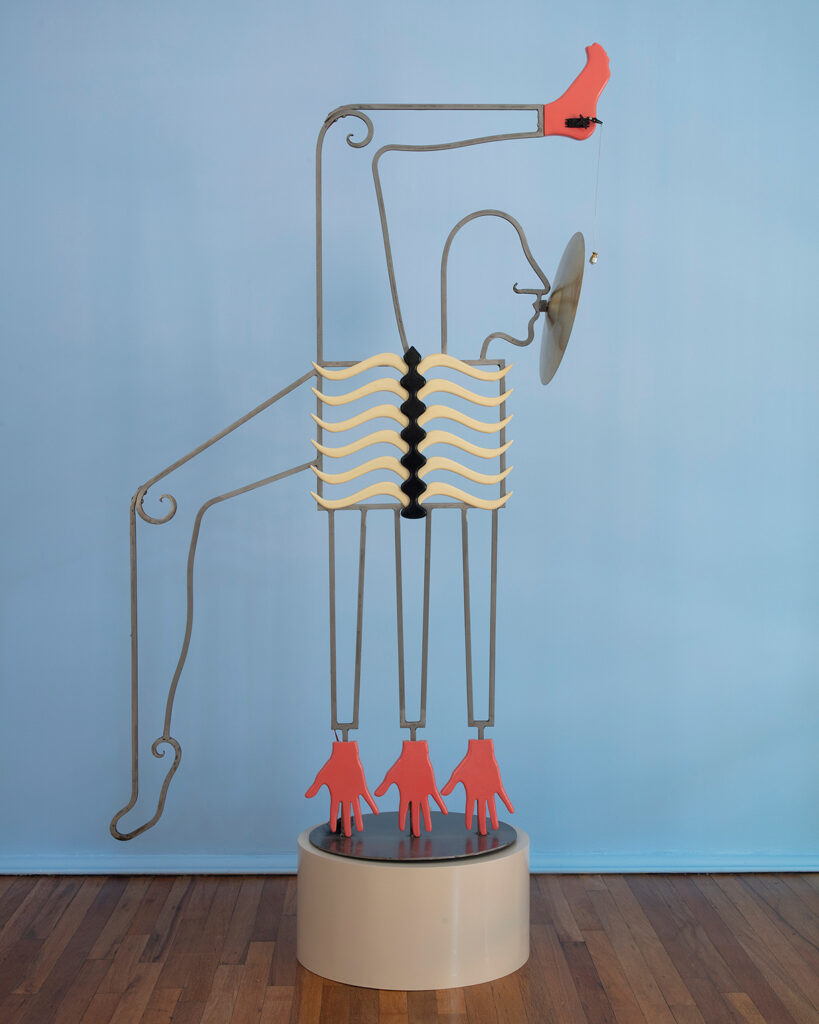
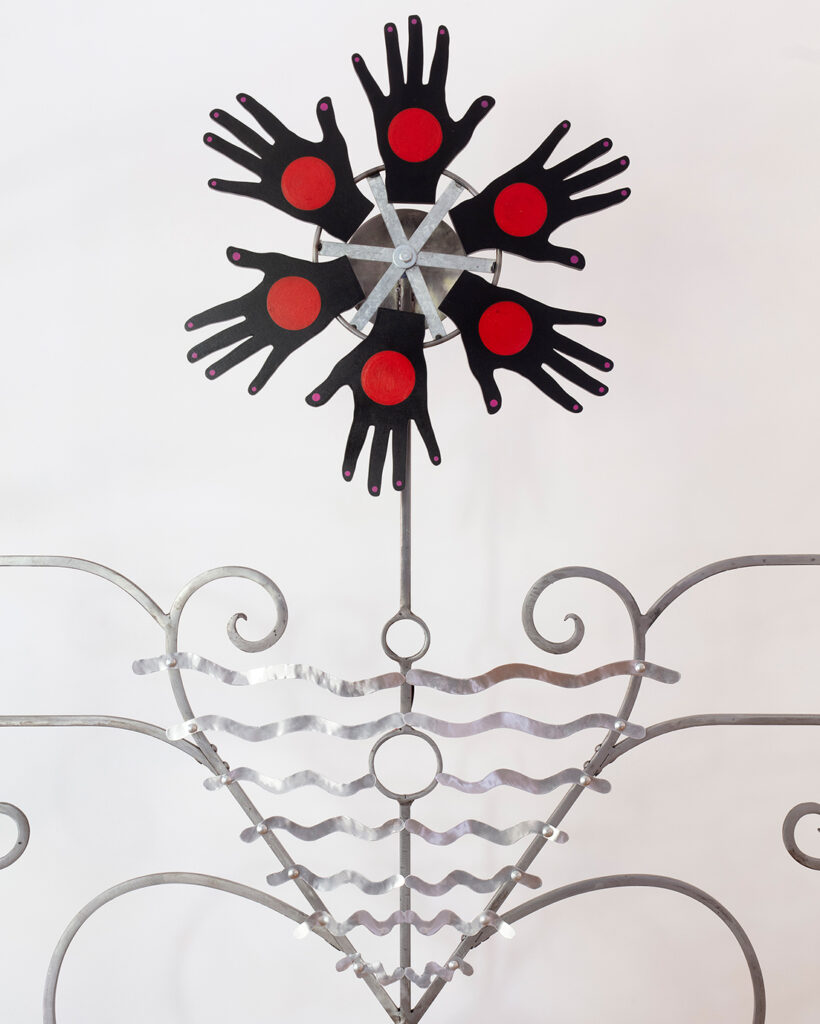
Evoking ritual, invocation, performability and celebration, they disrupt linear notions of time and progress, opting instead for cyclical, fragmented, and emotionally charged forms of storytelling that mirror the complexities of embodied experience.

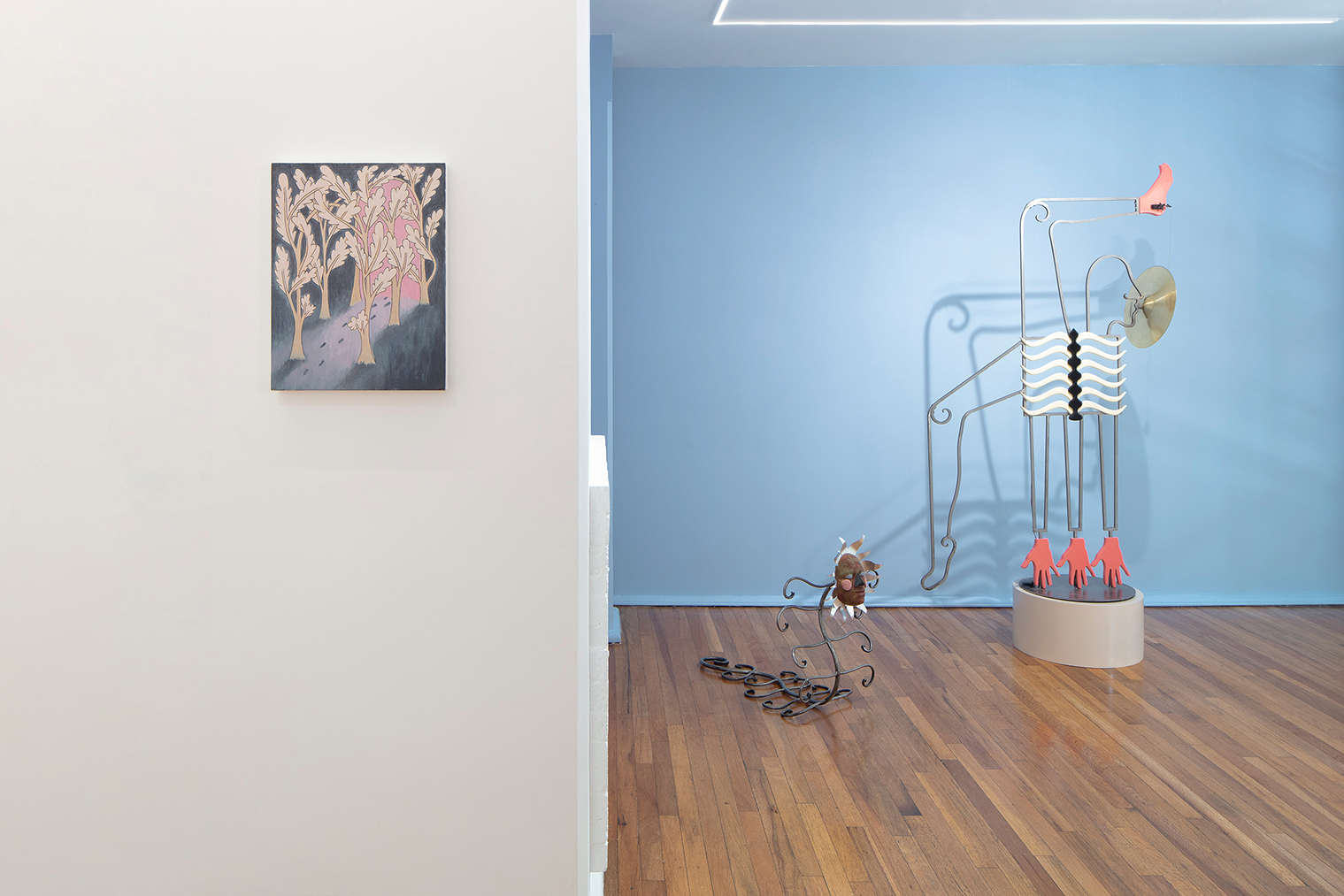
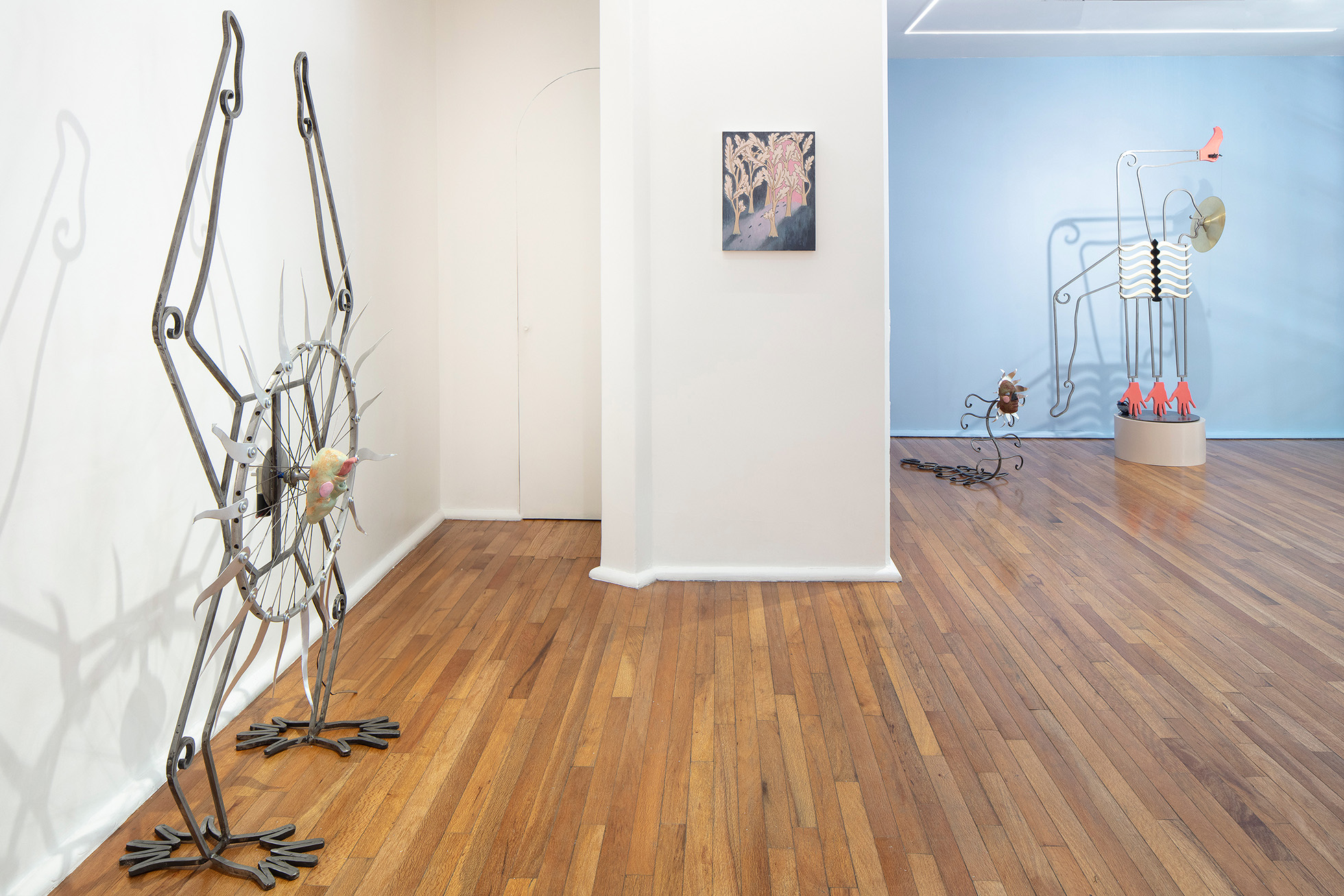
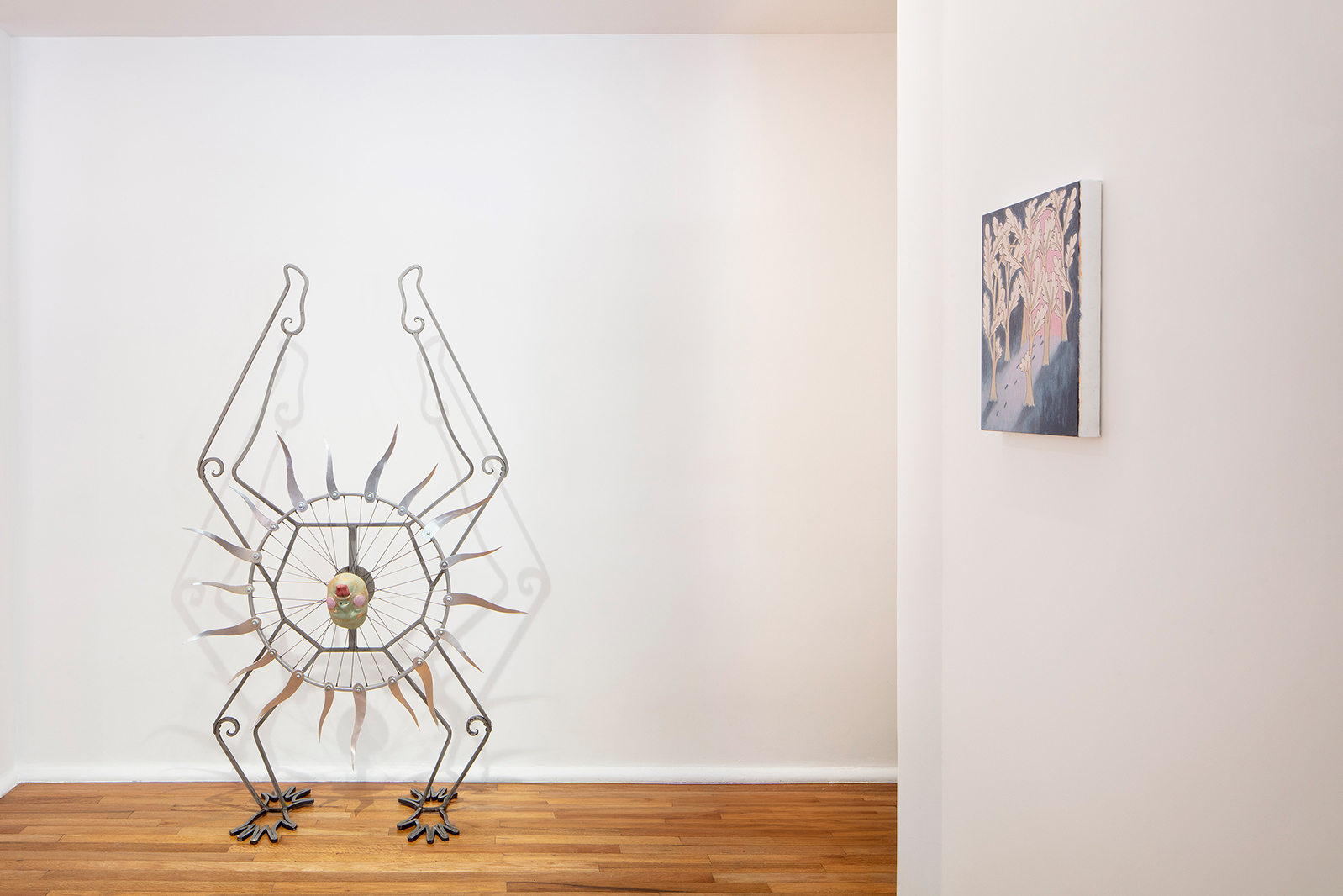
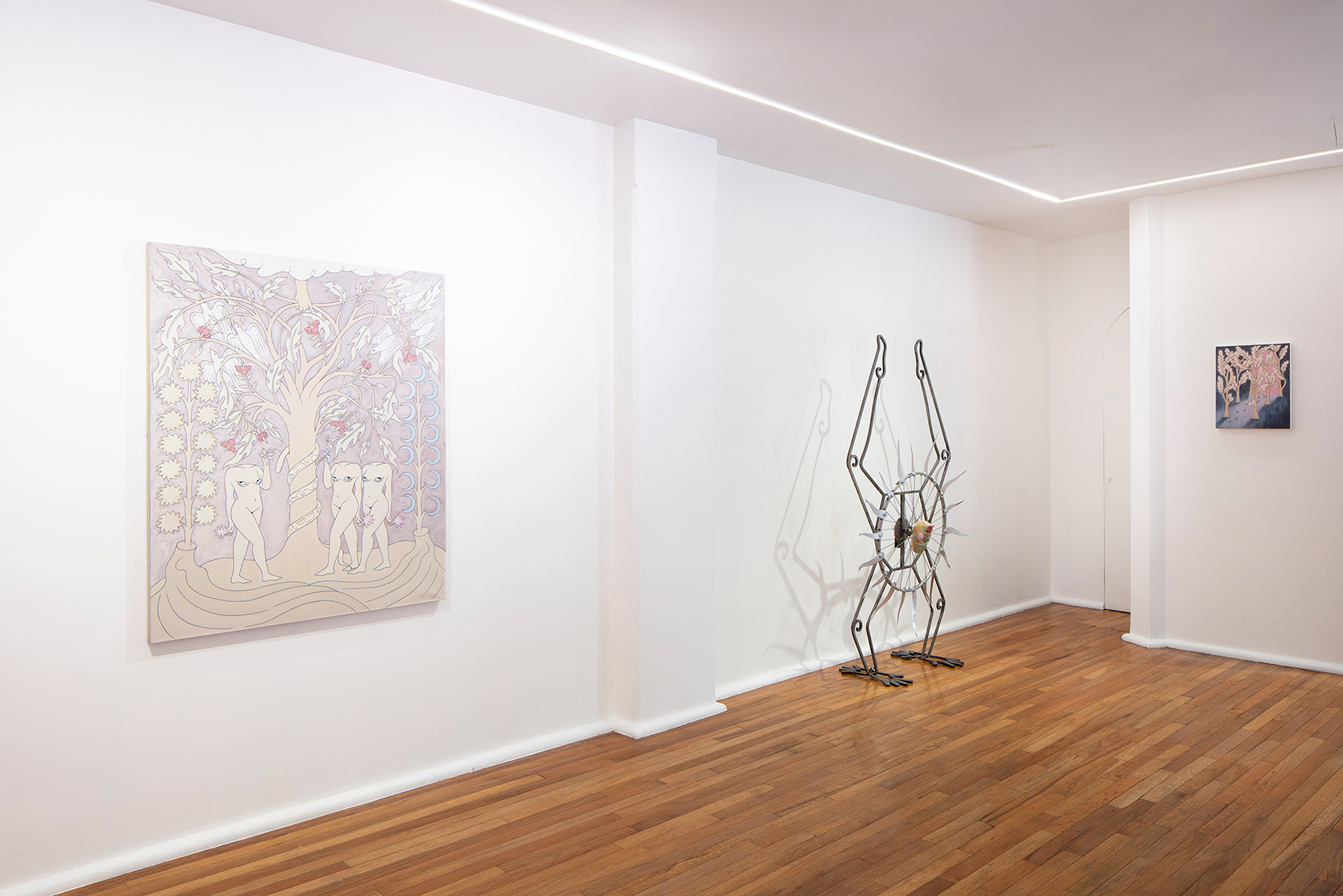
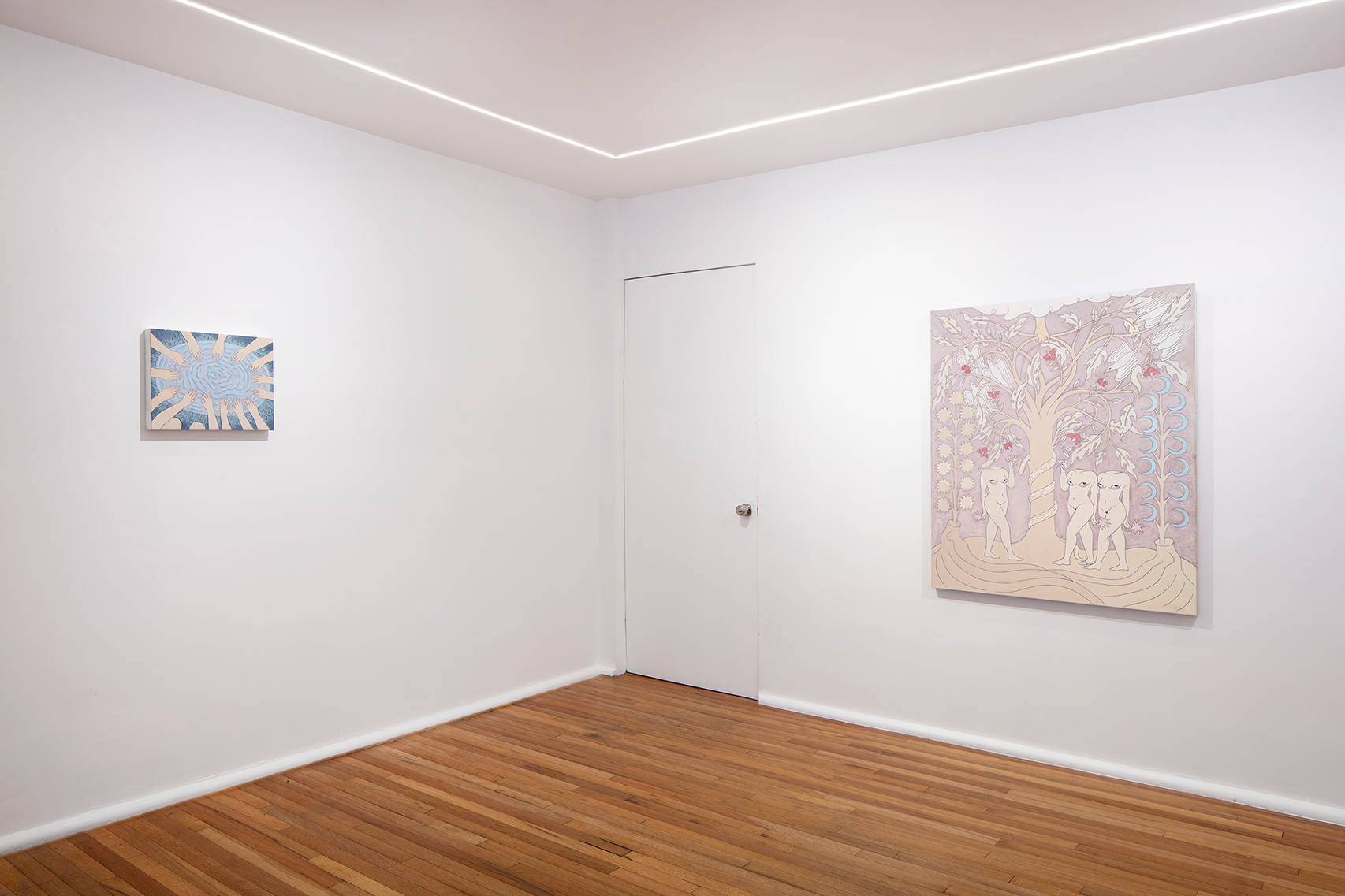

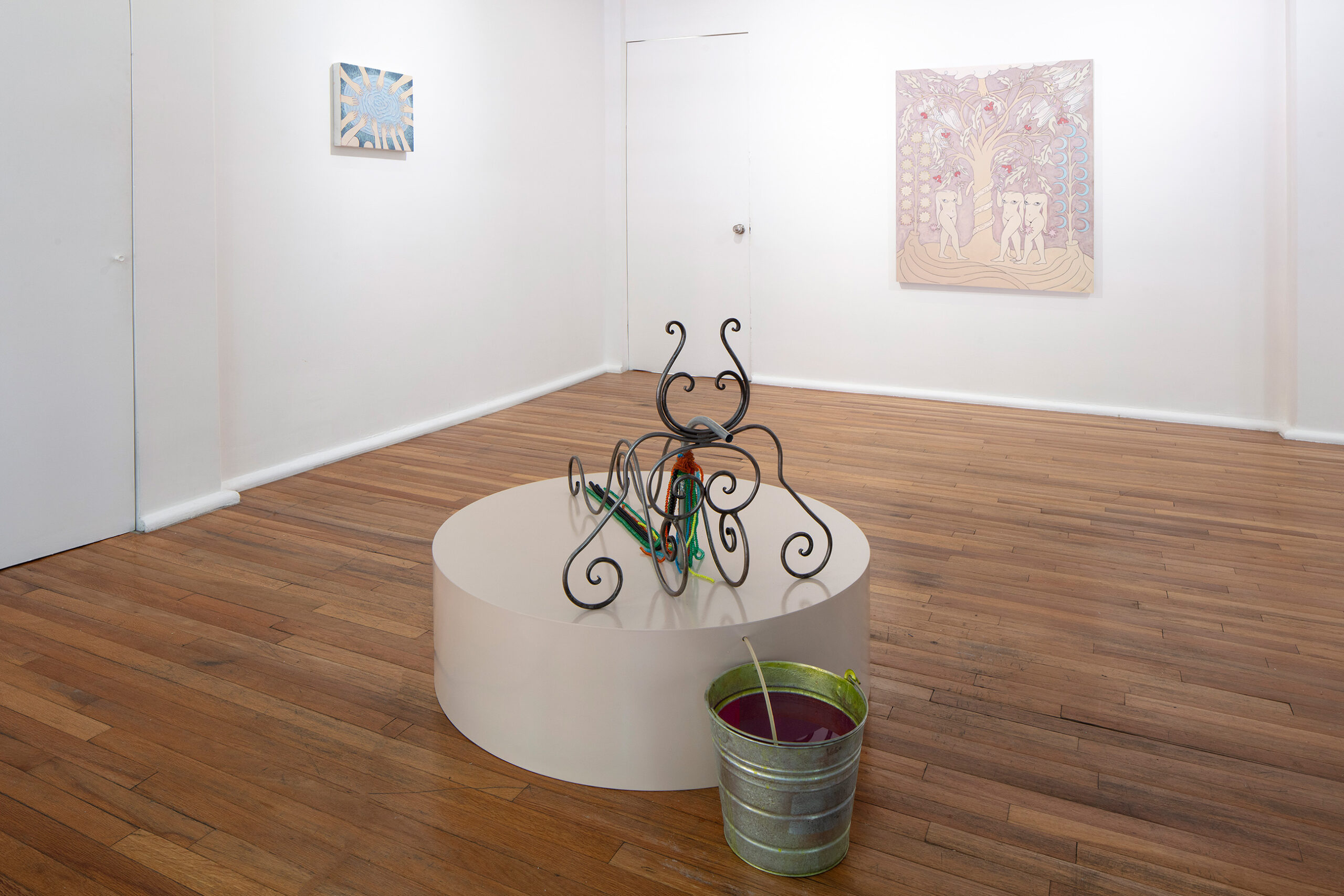
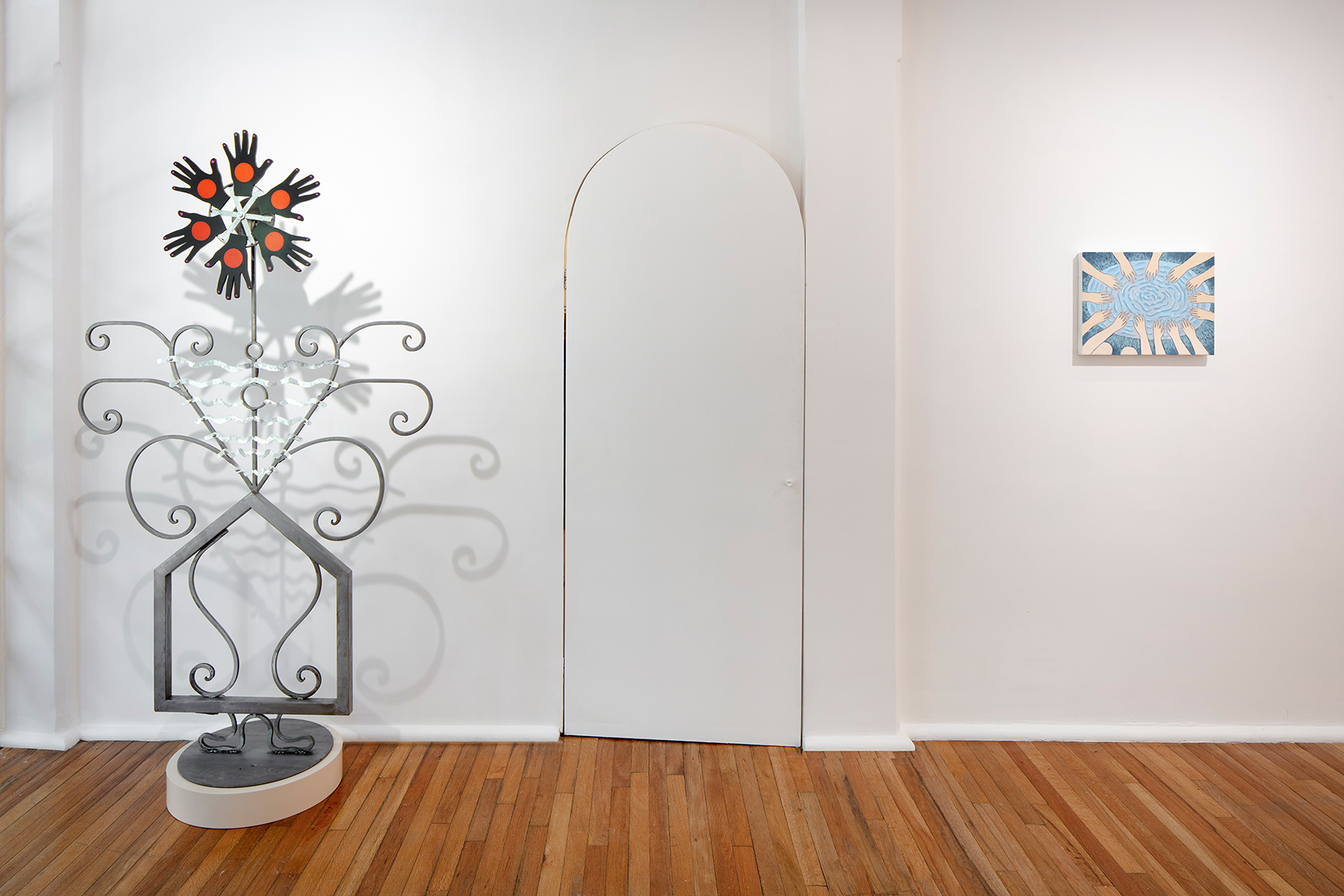
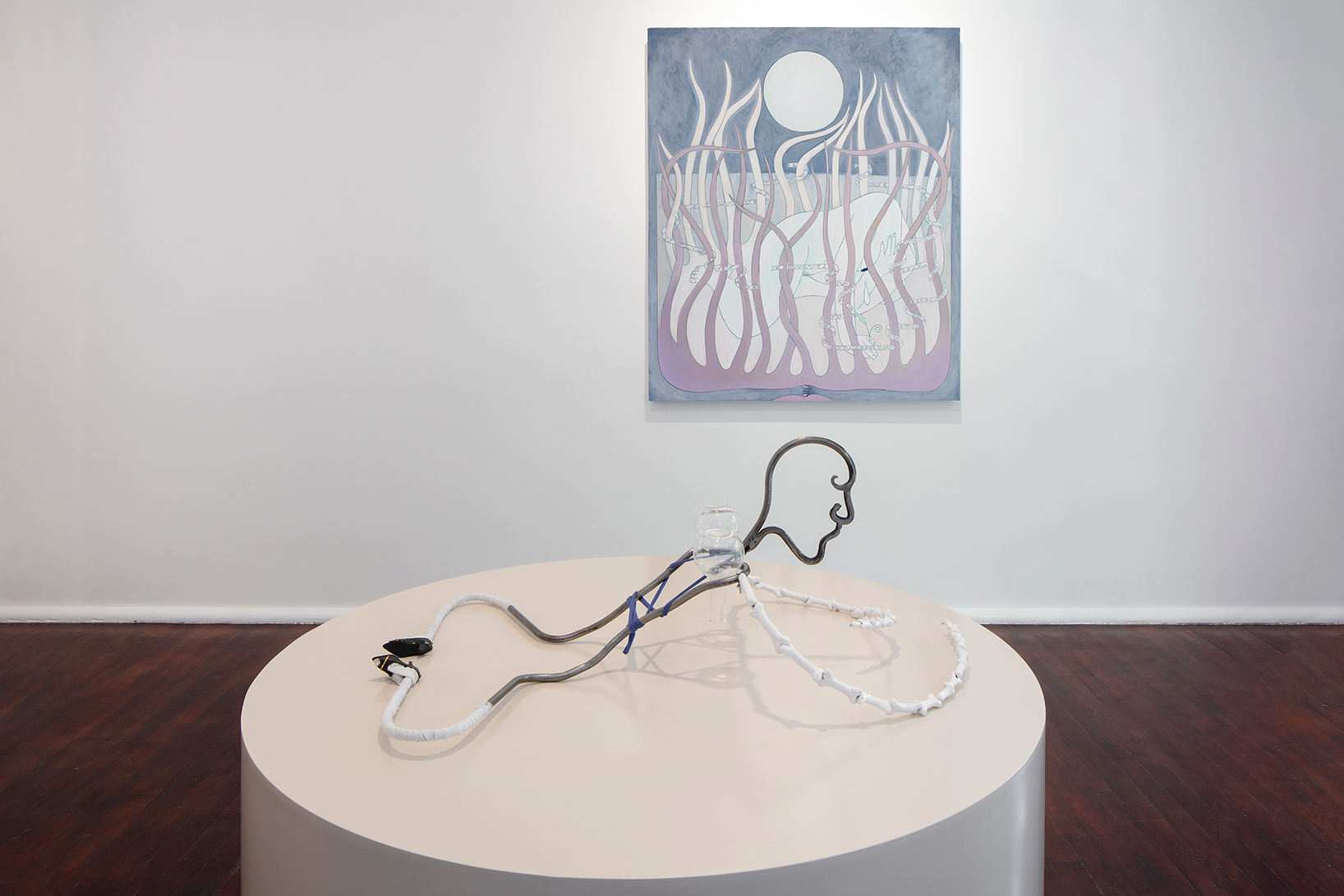
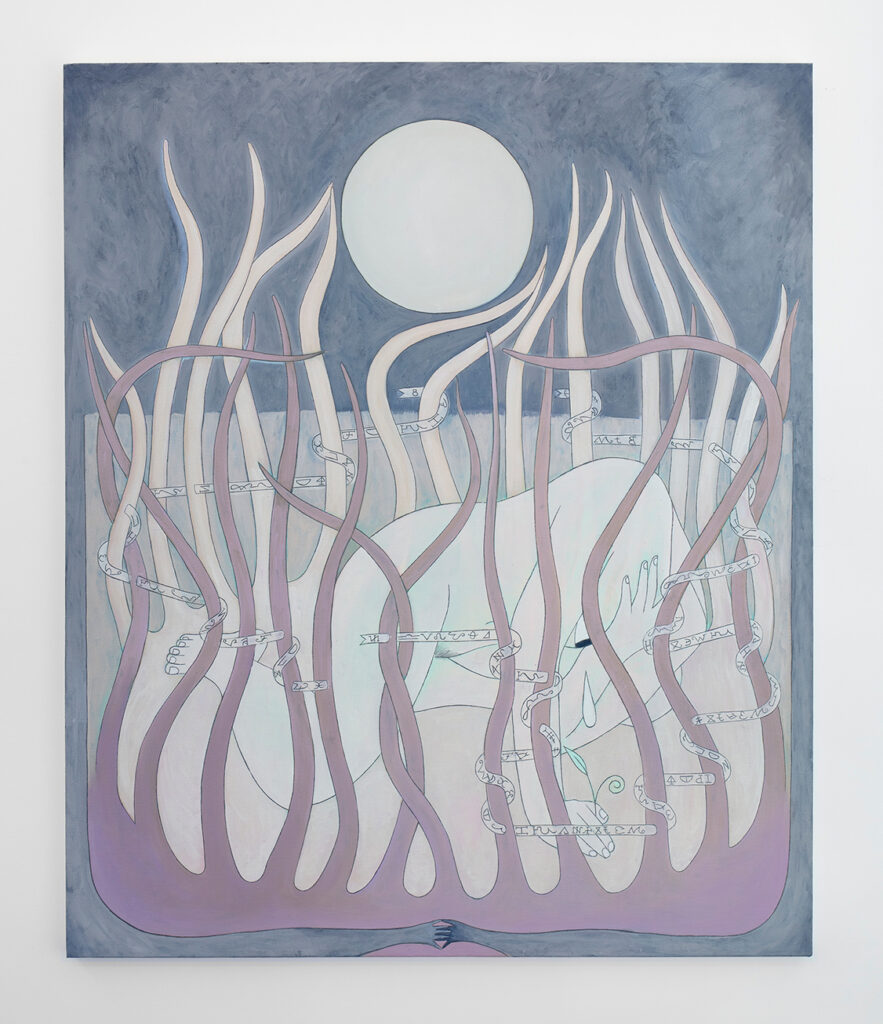
Constructing alternative mythologies, Conejo and Granier meet at the crossroads between poetic resistance and symbolic embodiment, and push back at dominant social and technological structures that attempt to control us while also proposing the possibility of imagining alternate realities from within a fractured world. Thus turning celebration, radical tenderness, speculative invention, and overall carnavalesque essence into tools for survival and liberation.
ARTWORKS

